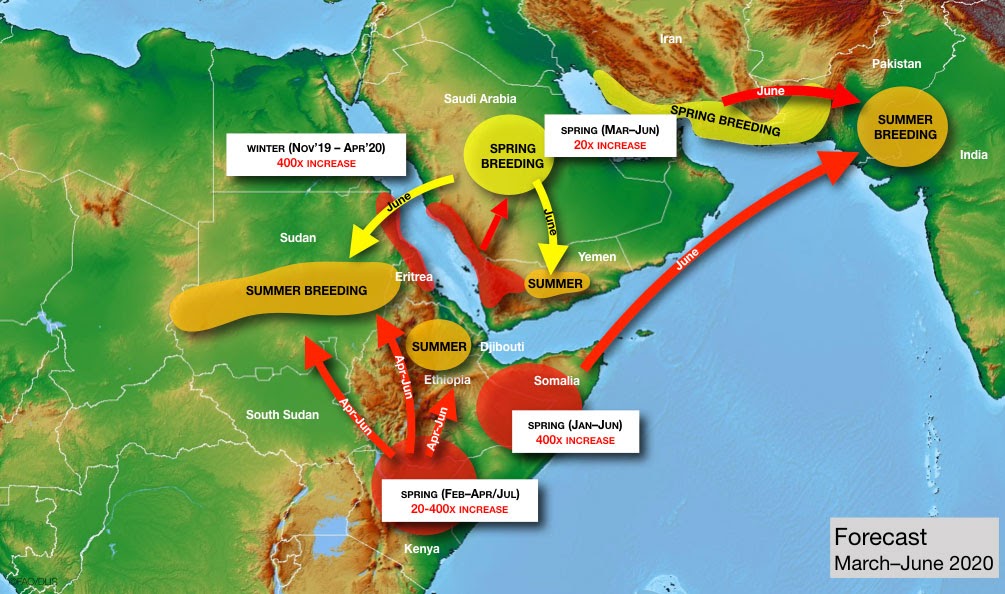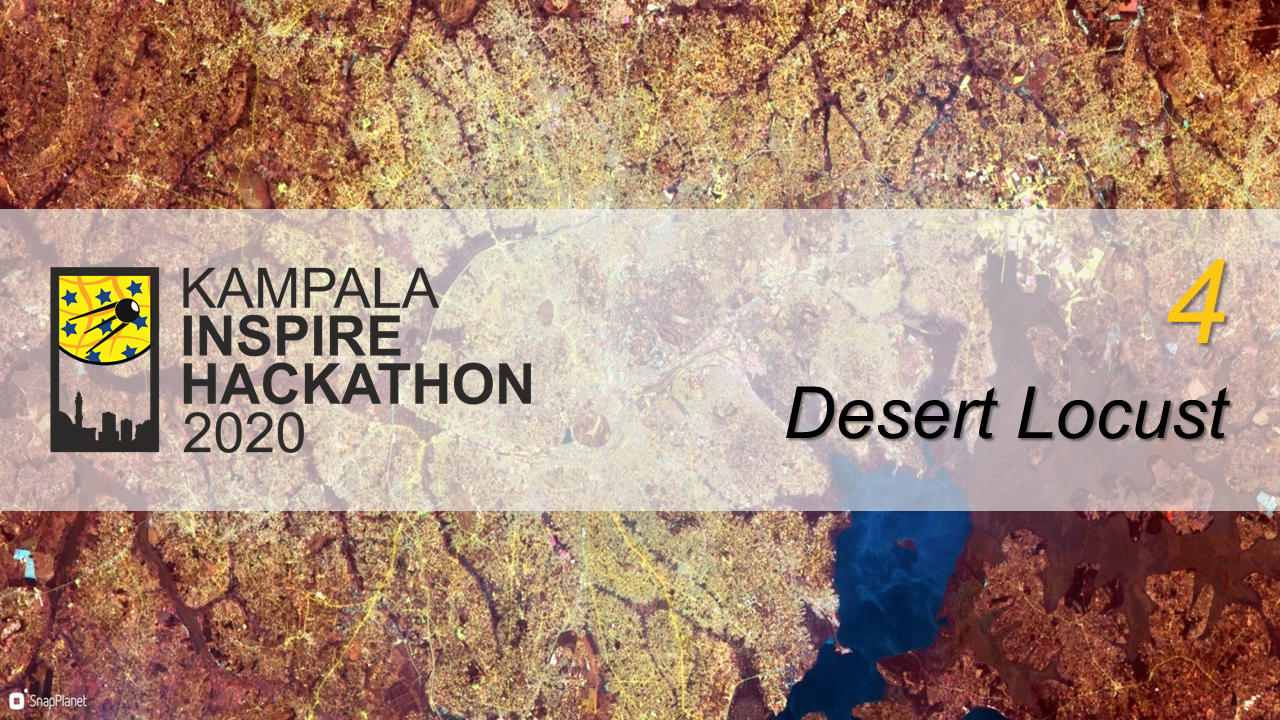This is a description of Challenge No. 4 of the Kampala INSPIRE Hackathon 2020 led by Paul Kasoma, Kizito Odhiambo, Lilian Ndungu. For more information about mentors see the link.
Parts of Eastern Africa are experiencing locust infestation since the end of 2019 and it has posed to be a great threat to the East African Societies, these locusts can form swarms of billions of individuals that damage crops and pastures. Without timely or effective interventions, sporadic cases of desert locusts can easily turn into an upsurge and ultimately a plague.
Previously, the UN warned that an imminent second hatch of the desert locusts could threaten the food security of 25 million people across the region. So far, East Africa society is losing a lot of Billions in controlling the spread of desert locusts. A lot of crops have been destroyed, revenues and export earnings have dropped as well as an increase in governments’ expenditure in trying to contain the outbreak. The appearance of the locusts follows a period of extreme weather, including devastating floods, that have further threatened the food supply.
Desert locust plagues take over a year to materialize. Stages of plague development include:
 Picture 1. Illustration of Desert Locust life cycle
Picture 1. Illustration of Desert Locust life cycle
Stage 1: Outbreak. Small and localized, can affect the size of a small town, consisting of dispersed populations.
Stage 2: Upsurge. Large increase in locust numbers, usually 2-3 successive transient breeding seasons, can affect the size of a country.
Stage 3: Plague. Widespread (intraregional) and heavy infestation of locust bands and swarms after a year of good rains and uncontrolled upsurges, can affect the size of a continent.
All these stages are equally dangerous and need to be effectively contained. however, it’s so important to target the dormant stage in the circle, which is the eggs stage, once these are destroyed, all the other metamorphosis is eliminated thus avoiding its danger.
However, early detection is critical in locust management – in the outbreak phase before they form swarms – because they possess very high mobility in the latter state; it is difficult to control mass migrating insects. In case of an outbreak, an early warning system could help locust control centres better manage intervention efforts to prevent locust upsurges and the formation of large swarms. This preventive strategy needs information on potential predictors of desert locusts such as various weather and soil parameters including: rainfall, temperature, air pressure, wind and soil moisture as well as information on near-real-time vegetation that is becoming green, required for locust breeding and preferred by the insect.
With such a variety of threats the locust imposes onto harvests and yields, there is no silver bullet to protect against losses and damage. Rather, a cohesive approach is needed that incorporates all available tools in the toolbox, from better forecasting and monitoring technologies to other innovative means that preserve human life, crop life, animal life as well as soil biodiversity.
Smallholder farmers are on the frontline when a pest outbreak takes hold. A small swarm of desert locusts can eat the equivalent food of 35,000 people per day, for example, while crop losses resulting from the spread of fall armyworm across sub-Saharan Africa are estimated to cost up to $6.1 billion a year. Yet while their livelihoods are most at risk, smallholders can also play a significant part in tackling crop pests like the desert locust.
By giving farmers access to better surveillance technology that enables them to monitor pests and forecast potential outbreaks, infestations can be tracked and managed effectively. Therefore, we invite innovative solutions for the control of the spread, breeding, as well as innovative early warnings solutions for the locusts outbreaks while preserving human, animal and soil life.

Picture 2: Desert Locust Risk (FAO)
To support local initiatives to monitor and control the locusts, this challenge will work towards developing a geospatial risk of outbreak model for the timely location of desert locust development and gregarization risk zones in Uganda. The challenge will take into account the presence or absence of transient phases of the desert locust species, biotope conditions, and gregarization thresholds for juveniles as well as flying adults. Part of the challenge will involve collating, summarizing and analysing field data (e.g., vegetation, rainfall, locust and control information) in order to assess the current situation and forecast the scale, timing and location of locust breeding and migration.
Both vector data, such as administrative boundaries, and raster data, such as satellite imagery and rainfall estimates, will be combined to help better understand the spatial relationship between infestations and the local environment. Earth observation data will permit a more efficient monitoring of locust breeding and swarming areas, as well as forecasting and preventing upsurges and/or invasions of locusts. This will minimize the socio-economic and environmental impacts linked to locust control while reducing the field teams’ workload. This challenge adds spatial and temporal precision to the RAMSES platform, a FAO database used to monitor and report on the desert locust.
Therefore, we invite innovative solutions for the control of the spread, breeding, as well as innovative early warnings solutions for the locusts outbreaks while preserving human, animal and soil life.
Yes, I want to register for Challenge #4!

